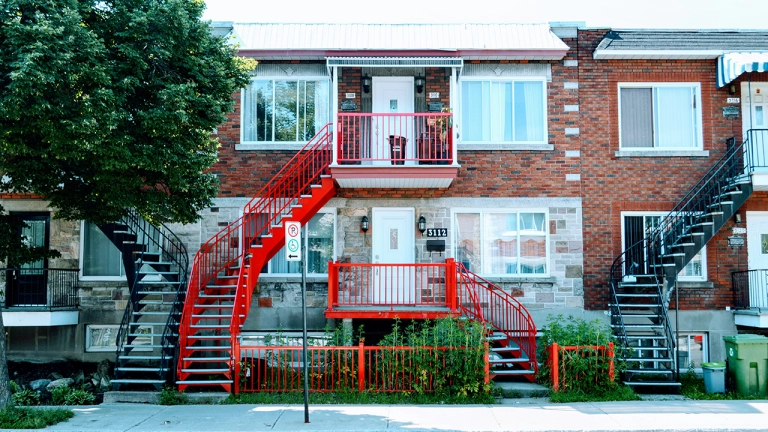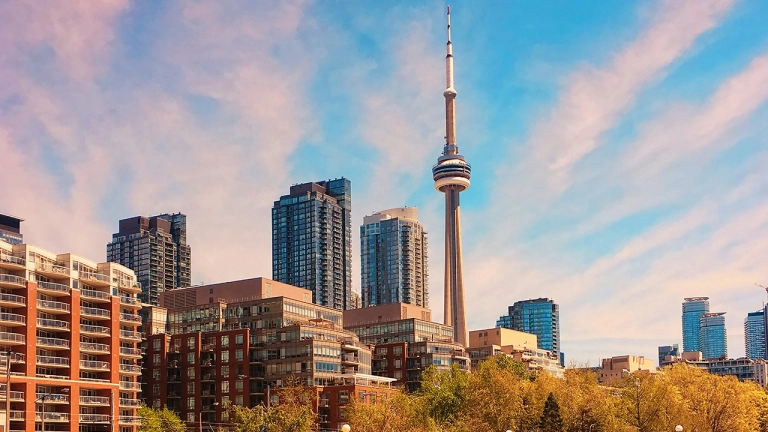In the bustling Toronto real estate market, where every square foot matters, one question often lingers in the minds of landlords and property owners: How can we reduce rental vacancy rates for our rental properties?
Whether you’re a seasoned real estate investor or a single property landlord looking to maximize your property’s potential, the key to success lies in understanding and tackling the factors that contribute to vacant units and tenant turnover.
In this blog post, we will explore actionable strategies and practical tips tailored to the Canadian rental market, specifically the Toronto rental market and the Greater Toronto Areas, including Oakville, Mississauga, and Burlington, to help you significantly reduce rental vacancy rates. From marketing your property effectively to ensuring tenant satisfaction, we’ll delve into the essential aspects of property management that can make a substantial difference in your rental property’s occupancy rate. Join me on this journey as we unlock the secrets to a more profitable and successful real estate investment venture.
Let’s get started.
What Does Rent Vacancy Rate Mean?
The rental vacancy rate is a crucial metric used in the real estate industry to measure the percentage of rental units within a particular area or in your real estate portfolio that are currently unoccupied or available for rent. It provides a snapshot of the supply and demand dynamics in the rental market, offering insights into how many rental units are vacant at a given time in relation to the total available units.
In simpler terms, it tells us how many rental homes or apartments are sitting empty, waiting for tenants. Understanding this rate is essential for landlords and property owners, especially in areas like Toronto and the Greater Toronto Areas, as it directly impacts rental income and the overall success of their real estate investments.
How To Calculate Vacancy Rates
Calculating the rental vacancy rate is a straightforward process that involves a simple formula. By following these steps, you can determine the vacancy rate for your rental property or the broader rental market in your desired area.
Step 1: Gather the necessary data.
First, you’ll need to know the total number of other rental properties in the area or property you want to assess.
Next, find out how many of these units are currently vacant or available for rent.
Step 2: Use the formula.
The formula for calculating the vacancy rate is as follows:
Vacancy Rate (%) = (Number of Vacant Units / Total Number of Units) x 100
Step 3: Calculate the vacancy rate.
Plug in the numbers you gathered in Step 1 into the formula. Then, multiply the result by 100 to express the rate as a percentage.
Example: Let’s say you’re a property owner with 50 rental units in a building, and currently, 5 of these units are unoccupied.
Vacancy Rate = (5 / 50) x 100 = 10%
In this example, the vacancy rate for your property is 10%. This means that 10% of your rental units are currently vacant and available for rent.
Understanding the vacancy rate for your property or the broader rental market can help you make informed decisions about pricing, marketing, and overall property management. It’s a valuable tool for landlords and investors looking to optimize their rental income and reduce vacancy rates.
What Is The Average Vacancy Rate For Rental Properties In Toronto?
According to the CMHC Rental Market Report for January 2023, the vacancy rates in Toronto are as follows:
Purpose Built Rental Market = 1.7%
Condominium Apartment Market = 1.1%
A rental vacancy rate below 2% signifies a robust and competitive rental market. It indicates strong tenant demand and makes it easier for landlords to attract and retain tenants. With limited options for renters, landlords may have the opportunity to increase rents while enjoying a stable rental income stream.
This low vacancy rate can be appealing to real estate investors and property managers, making the area more attractive for new investments in rental properties. However, it’s important to consider the potential challenges tenants may face in finding affordable and available rental units in such markets.
11 Ways To Reduce Rental Vacancy Rates
Now that we understand the significance of the rental vacancy rate, it’s time to delve into the strategies and actionable tips that can help you reduce it. Whether you’re a seasoned property owner or just starting in the real estate market, these 11 tips are tailored to the Canadian landscape, specifically Toronto and the Greater Toronto Areas, and are designed to empower you with the knowledge and tools needed to minimize vacant units and maximize your rental property’s potential.
Let’s explore these proven tactics for achieving higher occupancy rates and increased profitability in your real estate investment venture.
1 - Competitive Pricing
Competitive pricing is crucial for reducing rental vacancy rates in Toronto’s competitive real estate market. Research local rent prices and similar properties in your area to set a competitive rent that aligns with market trends and property improvements.
Regularly reviewing and adjusting your rental price based on market conditions and tenant feedback ensures your property remains enticing to potential renters. Striking the right balance between competitive pricing and the value your property provides is essential for maintaining a consistently low vacancy rate in the bustling Toronto and Greater Toronto Areas.
2 - Proactive Maintenance & Repairs
Investing in proactive maintenance and timely repairs is a savvy strategy to keep your rental property occupied. Regularly inspect and address any maintenance issues promptly, from leaky faucets to HVAC system servicing. Not only does this demonstrate your commitment to tenant comfort, but it also preserves the overall condition of the property, reducing turnover between tenants. A well-maintained property is more likely to attract and retain tenants, and it can command higher rent rates.
Proactive maintenance and repairs also reduce the amount of time your unit sits empty. You will get the highest rent for your rental property if it shows well to prospective tenants. Make sure all items are taken care of. If you wait until the current tenants move out to do repairs, you may have your unit sitting empty with no marketing efforts such as showings being done. This wastes time and increases your rental vacancy rate.
3 - Strong Curb Appeal
The first impression of your rental property often starts at the curb, whether it’s winter curb appeal or spring curb appeal, making curb appeal a vital factor in reducing vacancy rates. Maintain an inviting exterior by keeping the lawn well-manicured, planting attractive landscaping, and ensuring the property’s exterior is in excellent condition. A fresh coat of paint, clean walkways, and well-maintained common areas can significantly enhance the overall appeal.
4 - Marketing Your Rental Property Effectively
Effectively marketing your rental property is essential to reach potential tenants efficiently, and one way to do this is by enlisting the services of a rental real estate agent. A seasoned agent, like myself serving the Toronto and Greater Toronto Areas, can leverage their expertise to showcase your property’s unique selling points and target the right audience. They’ll use professional photographs and descriptions, list your property on prominent rental platforms, and employ marketing strategies to maximize visibility.
Additionally, consider offering virtual tours or video walkthroughs, which have become increasingly popular in today’s digital age. With expert marketing and the guidance of a real estate agent, you can attract qualified tenants faster, ultimately reducing vacancy rates and streamlining the rental process.
5 - Flexible Lease Terms
In your efforts to lower rental vacancy rates in Toronto and the Greater Toronto Areas, consider the value of offering flexible lease terms. While the one-year lease is common, providing options such as six-month or month-to-month leases can attract a wider range of tenants. This flexibility accommodates those who may be uncertain about their long-term plans or looking for temporary housing solutions.
By catering to diverse tenant needs, you can keep your property occupied year-round, minimizing gaps between leases and ultimately reducing your vacancy rate. Additionally, consider discussing potential lease extensions or lease renewals with existing tenants before their lease expires to foster longer-term tenancies and stability.
6 - Tenant Screening
Effective tenant screening is a cornerstone of maintaining a low rental vacancy rate. It’s essential to have a thorough tenant screening process to ensure they are a good fit for your rental dwelling. This process should include checking their credit history, employment status, rental history, and references to make sure they are trustworthy and responsible tenants.
In Toronto and the Greater Toronto Areas, where rental demand is high, finding reliable, responsible tenants is paramount. Screening not only helps you identify trustworthy renters but also reduces the likelihood of lease terminations due to tenant-related issues or working with irresponsible or difficult tenants.
By selecting the right tenants from the start, you can significantly minimize vacancies and create a more stable and profitable rental property. Consider partnering with a professional property management company or rental real estate agent to streamline this process and ensure thorough screening.
7 - Having Responsive Property Managers
Responsive property management is a critical factor in maintaining a low vacancy rate. In the dynamic Toronto and Greater Toronto Area rental markets, having a dedicated property manager who can promptly address tenant concerns and property maintenance issues is invaluable. A responsive property manager who leverages the help of property management software ensures that tenant maintenance requests and repairs are handled efficiently, which can lead to higher tenant satisfaction and longer lease terms. Tenants are more likely to stay in a well-managed property where their needs are met promptly. No one wants to experience poor customer service.
8 - Good Tenant Relations
Maintaining positive landlord-tenant relationships is not only good for tenant retention but also for reducing vacancy rates. Tenants who feel valued and respected are more likely to renew their leases and recommend your property to other prospective tenants.
Communicate openly and inform tenants, addressing their concerns and requests. Showing appreciation through small gestures like holiday cards or occasional property upgrades can go a long way in fostering goodwill. Building strong landlord-tenant relationships creates a sense of community and trust, encouraging tenants to stay longer, and ultimately reducing turnover and vacancy periods.
9 - Offer Incentives
To entice future tenants and reduce vacancy rates, consider offering incentives that sweeten the deal. In Toronto’s competitive rental market, these incentives can set your property apart. You might offer the first month’s rent at a discounted rate, provide free parking for a specific duration, or postpone your rental increase. Another option is to offer upgrades or improvements to the property during lease renewals, such as new appliances or a fresh coat of paint. These incentives not only make your property more appealing but can also motivate new tenants to commit more quickly – ultimately decreasing your rental vacancy rate.
10 - Improve Your Property
Investing in property improvements can be a smart strategy to reduce vacancy rates and attract quality tenants. Tenants are drawn to properties that offer modern amenities and a well-maintained appearance. Consider upgrades such as energy-efficient appliances, updated kitchens and bathrooms, fresh paint, or enhanced landscaping. These improvements not only make your property more attractive but can also justify higher rental rates.
11 - Keep Your Rental Property Safe
Ensuring the safety of your rental property is paramount for tenant satisfaction and vacancy reduction. In the bustling Toronto and Greater Toronto Areas, safety concerns can significantly impact tenant retention. Install and maintain security measures such as reliable locks, well-lit common areas, and functioning smoke detectors. Additionally, address potential noise issues with other neighbours, especially in condos. Promoting a safe and secure environment not only keeps your current tenants content but also attracts new ones.
Why Is The Vacancy Rate Of A Rental Property Important?
The vacancy rate of a rental property holds significant importance for landlords and property owners, especially in Toronto and the Greater Toronto Area. It serves as a key indicator of the rental market’s health and competitiveness. A low vacancy rate, typically below 2%, is a positive sign, indicating strong tenant demand and low tenant turnover. This can result in shorter vacancy periods, consistent rental income, and potential property value appreciation. Beyond financial benefits, it fosters stability, a sense of community, and longer tenant leases while avoiding tenant turnover costs.
Conversely, a high vacancy rate may signify issues like overpricing, property neglect, or tenant dissatisfaction. It can lead to financial strain, prolonged periods without rental income, and increased marketing expenses. In essence, the vacancy rate directly influences financial returns, property value, and tenant satisfaction. In Toronto’s dynamic real estate market, actively managing this rate is essential for long-term success and profitability.
Final Thoughts On How To Reduce Rental Vacancy Rates
As we wrap up our exploration of strategies to lower rental vacancy rates, it’s clear that a proactive approach is key to success in this competitive real estate landscape. From offering competitive pricing and flexible lease terms to maintaining strong tenant relations and enhancing property appeal, these tips provide a comprehensive roadmap for property owners and landlords on how to decrease rental vacancy rates.
For those seeking professional guidance and expertise in navigating the intricacies of Toronto’s rental market, consider enlisting the services of a seasoned Toronto rental agent, such as myself. As a real estate broker with a deep understanding of the local market dynamics, I can help you implement these strategies effectively and make informed decisions to optimize your rental property’s occupancy rate.
In conclusion, reducing rental vacancy rates is not just about filling empty units; it’s about creating a profitable, stable, and tenant-friendly rental property that stands out in Toronto’s bustling real estate market. By implementing the tips discussed in this blog and seeking expert assistance, you can embark on a journey toward greater success and profitability in your real estate investment ventures.







